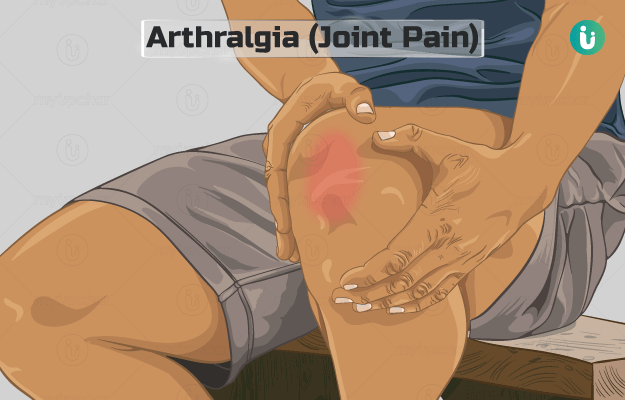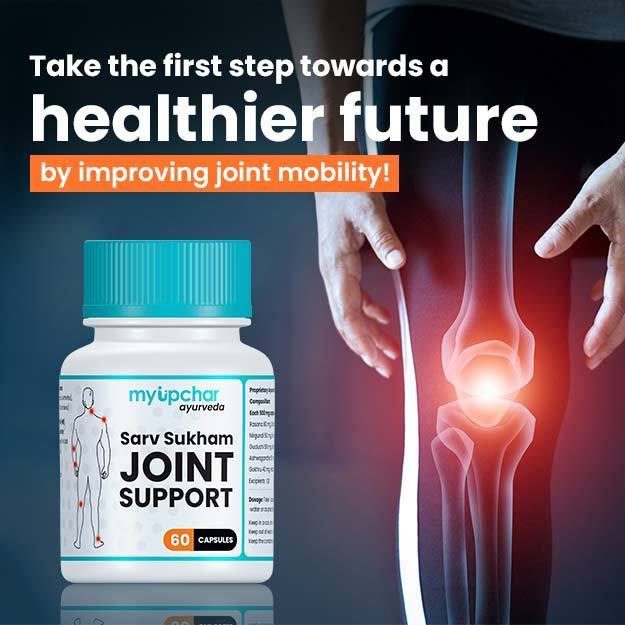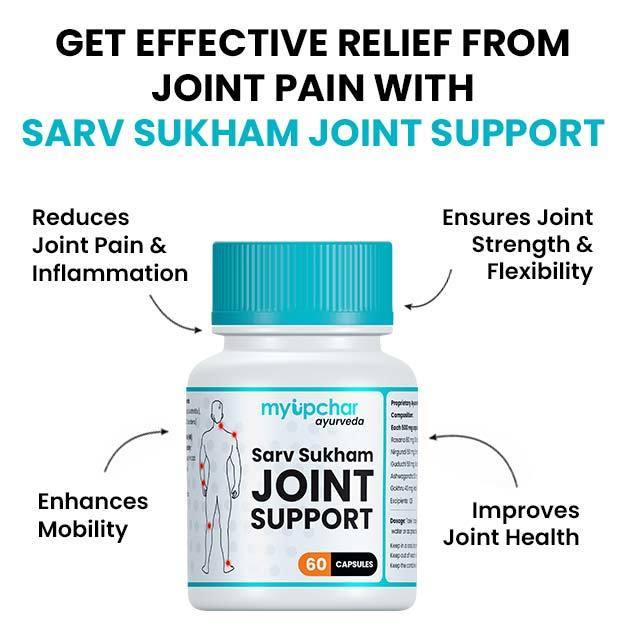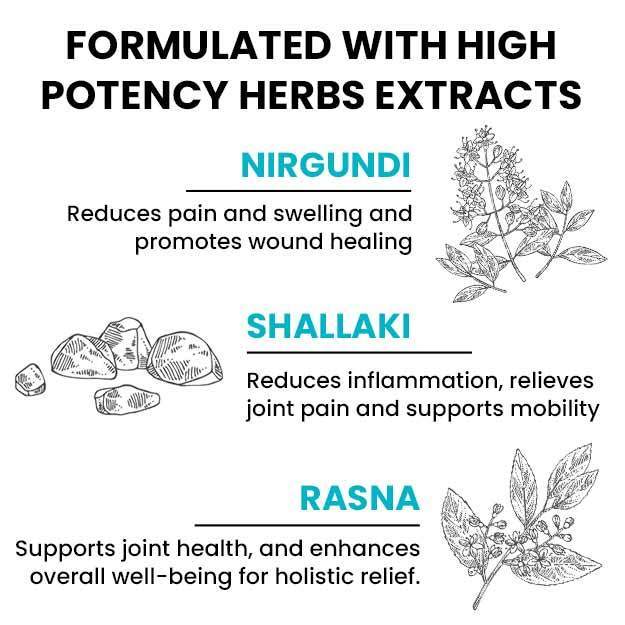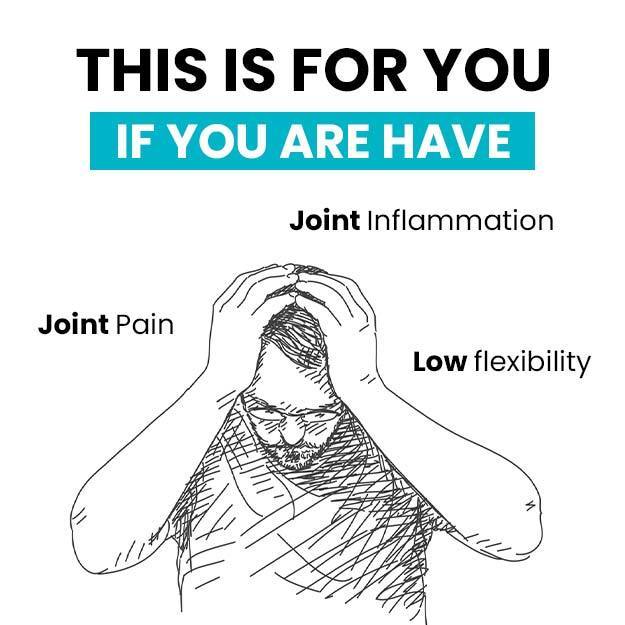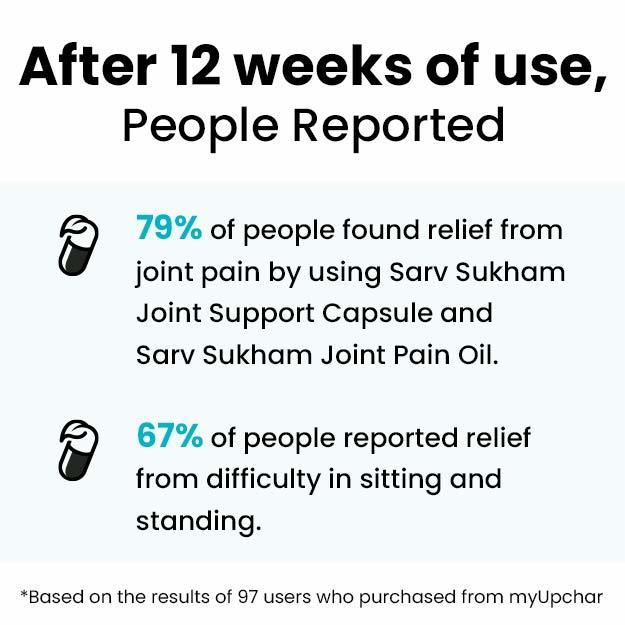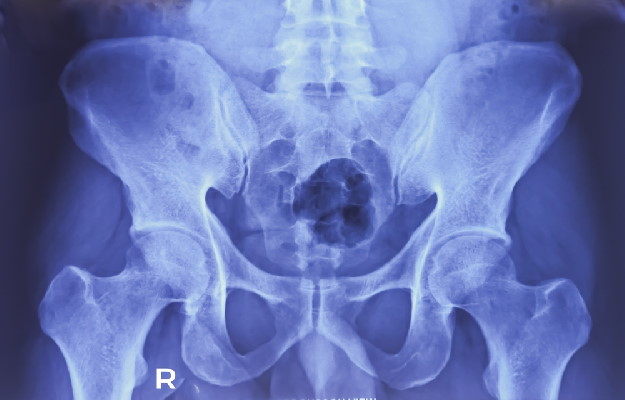Joint pain can occur due to various reasons, which include bone injuries like fractures; diseases affecting the bones like arthritis, osteoarthritis, gout, septic arthritis and tendinitis; autoimmune conditions affecting the bones like lupus and rheumatoid arthritis; and sprains and strains caused due to overuse or exertion of bones.
The pain can occur in one or multiple joints and is often associated with swelling, tenderness, and redness in the joints and discomfort while walking.
Conventional therapies for joint pain include non-steroidal anti-inflammatory drugs and antibiotics. Joint rehabilitation and physical therapy are recommended along with medications to achieve relief from joint pain.
Homeopathic treatment of joint pain aims to treat the underlying cause of the condition along with reducing the swelling and discomfort. Before prescribing a remedy, homeopathic doctors not only consider the disease symptoms but also the mental and physical make-up of the person as well as their miasms (tendency to suffer from certain conditions). Hence, every remedy is tailored to the patient's needs and there is no one pill heals all (unlike conventional medicines where one pill can be given to all patients). Some of the homeopathic remedies that are used for the treatment of joint pain and its associated symptoms are arnica montana, rhus toxicodendron, bryonia alba, calcarea phosphorica, ledum palustre, ruta graveolens, belladonna, mercurius solubilis and colchicum autumnale.
- Homeopathic medicines for joint pain (arthralgia)
- Dietary and lifestyle changes for a joint pain (arthralgia) patient as per homeopathy
- How effective are homeopathic medicines and treatments for joint pain (arthralgia)
- Side effects and risks of homeopathic medicine and treatments for joint pain (arthralgia)
- Takeaway
Homeopathic medicines for joint pain (arthralgia)
-
Arnica Montana
Common Name: Leopard's bane
Symptoms: Leopard's bane is suitable for the treatment of injuries. It is prescribed to patients who feel general soreness in their body along with a bruised feeling. Arnica montana also helps heal the following symptoms:- Sprains
- Pain in the bones and cartilages of the chest
- Back pain along with pain in arms and legs
- A feeling as if a joint is dislocated
- A sensation of coldness in the forearm
- Rheumatism (pain and inflammation in joints) that begins in the lower part of the body and progresses upwards
- Severe pain in the elbow of the left arm
- Bruising pain in the pelvic region, making it difficult to walk straight
Symptoms become worse in humid and cold weather, after resting, on touching the affected area, and drinking wine. The patient feels better on placing their head low and after lying down.
-
Rhus Toxicodendron
Common Name: Poison-ivy
Symptoms: Poison-ivy provides relief from tearing type of pains. Individuals who benefit from this remedy experience stiffness in joints along with joint pain. Poison-ivy helps reduce joint pain caused due to acute arthritis and gout. It also helps relieve the following symptoms:- Swelling in bones
- Loss of strength in the forearms and fingers along with a sense of paralysis in arms and legs
- Pain and heat in joints
- Tearing pains in ligaments
- Soreness in the bone condyles (round protruding area at the end of a bone)
- Rheumatic pain in loins and the nape of the neck that worsens after moving
- Numbness after overexertion
- Sciatica that becomes worse at night and in cold and damp weather
Symptoms become worse in cold weather and rainy seasons, at night-time, while sleeping, and after lying on the right side or on the back. They become better in dry and warm weather, stretching limbs and after with warm applications.
-
Bryonia Alba
Common Name: Wild hops
Symptoms: Bryonia alba works best for people who are physically weak. It helps treat tearing and stitching type of pains that get better after resting. This remedy is also suitable for excessive dryness of mucous membranes (inner lining of various organs) and is especially given to patients who experience joint pain due to gout and acute arthritis. Symptoms that indicate a need for this remedy are:- Redness, swelling and heat in joints with a stitching and tearing sensation; the patient constantly moves their left leg and arm
- Stiffness and pain in knees
- Stitching sensation and stiffness in the small of the back (the lower back region where it curves in)
- Heat and swelling in feet
- Stiffness and pain at the base of the neck
Symptoms become worse after eating, moving even a little, touching the affected area and in warm and hot weather. All complaints improve after taking rest, and on lying on the painful side.
-
Calcarea Phosphorica
Common Name: Phosphate of lime
Symptoms: Calcarea phosphorica works best for children who are irritable, anaemic and have digestion problems. It helps alleviate the following symptoms:- Rheumatic pain with dullness in head
- Stiffness, pain and numbness in extremities that worsen with changing weather
- Soreness in the lower back region
- A crawling sensation in extremities
- Feeling exhausted while taking stairs
- Non-union fractures (fractures that fail to heal)
Symptoms become worse in cold and damp conditions and they become better in warm and dry weather and during summers.
-
Ledum Palustre
Common Name: Marsh-tea
Symptoms: Marsh-tea is best suited for people who experience general coldness in their body and feel a cold sensation in wounds. This remedy helps treat the following symptoms:- Cracking sensations in joints that worsen on lying on a warm bed (Read more: Cracking sound in knee causes)
- Gouty pain in limbs, especially the foot and small joints along with gouty nodosities (knob-like swellings)
- Rheumatism that begins in lower limbs and progresses to the upper body parts
- Swelling with a sensation of heat in arms and legs
- Swollen ankles that tend to get sprained easily
- Extreme pain in the soles of feet
- A throbbing sensation in the right shoulder
Symptoms aggravate at night-time. They become better on dipping one's feet in cold water and in cold weather.
-
Ruta Graveolens
Common Name: Rue-bitterwort
Symptoms: Rue-bitterwort is best suited for people who feel extremely weak and lethargic and experience pain in the entire body as if it is bruised. This remedy helps reduce burning sensation in joints and is also effective in case of the following symptoms:- Pain and stiffness in hands and wrists along with a tightening sensation in fingers
- Soreness in tendons
- A bruised feeling in limbs and spine
- Pain in the ankles, feet bones, and hips
- Aching pain in the Achilles tendon
- Pain in the thigh while stretching the limbs
- Sciatica that worsens after lying down at night
Symptoms become worse in cold and wet weather and on lying down.
-
Belladonna
Common Name: Deadly nightshade
Symptoms: Belladonna works well for people who tend to have no fear or anxiety. It is an excellent remedy for neuralgic pains and swelling and pain in bones. Symptoms that indicate a need for this remedy are:- A wobbling walk and spasms and twitching in limbs
- Shooting pains in limbs
- Fluctuating rheumatic pains
- Coldness in extremities
- Swelling that appears white due to the accumulation of lymphatic fluid
Symptoms become worse in the noon, on touching the affected part, and after lying down. They become better when the patient sits in a semi-erect position.
-
Mercurius Solubilis
Common Name: Quicksilver
Symptoms: This remedy is prescribed to those who often experience tremors in their body. Their symptoms become worse at night and after sweating. Mercurius Solubilis helps reduce stitching pain in bones. It also helps manage the following symptoms:
Symptoms become worse in damp and wet weather, at night, on lying on the right side, and in warm conditions.
-
Colchicum Autumnale
Common Name: Meadow saffron
Symptoms: Colchicum autumnale is given to patients who experience a feeling of cold inside their body. It is an excellent remedy for tenderness in joints. This remedy also helps reduce the following symptoms:- Stiffness in joints along with fever
- Tearing sensation in limbs in warm weather
- Fluctuating rheumatic pains that worsen at night
- Stinging sensation in limbs during cold weather
- Gout and inflammation of the left heel
- Weakness along with a tingling sensation in arms and legs that worsens in warm weather and in evenings
- Pain in the front portion of thigh
- Sharp pain in left arm
- Oedema in feet and legs along with a sensation of coldness
- Pain in loins
- Difficulty in walking as the knees strike together
Symptoms worsen between evening and sunrise, with the smell of food, not being able to sleep. They become better when the patient bends forward.
Dietary and lifestyle changes for a joint pain (arthralgia) patient as per homeopathy
Dr Hahnemann, the founder of homeoapthic medicine, recommended the following lifestyle and dietary guidelines to get maximum therapeutic benefit from homeopathic remedies:
Do’s:
- In the case of acute joint pain, gratify your desires of eating and drinking in reasonable limits and adjust the room temperature according to your comfort.
- In the case of chronic joint pain, wear linen clothing during warm weather.
- Follow an active lifestyle and live in hygienic conditions.
Don’ts:
- In the case of chronic joint pain, do not consume spices, odorous water and herbal teas. Avoid eating an excess of sugary and spicy foods.
- Do not eat dishes that have medicinal herbs in them.
Since homeopathic remedies are made from highly diluted natural substances, following these guidelines ensures that the potency of the remedies doesn't get affected. Also, they help improve the overall health of the person.
How effective are homeopathic medicines and treatments for joint pain (arthralgia)
Homeopathic remedies are effective in treating conditions like arthritis and osteoarthritis that cause joint pain. Although they provide better results when administered in the early course of the disease, they are effective when given in the later stages of the disease as well.
In 2014, a retrospective study was conducted to study the efficacy of homeopathic medicines as an add on therapy for rheumatoid arthritis patients. The 10 patients included in the study experienced pain and stiffness in the morning. They were given constitutional individualized homeopathic medications for about a year. The study results concluded that constitutional homeopathic remedies proved to be effective in reducing pain, disability and disease activity score in all the patients along improving their quality of life. Most patients also started to use fewer analgesics than they were before taking homeopathic remedies.
In another study, the possible effects of ruta graveolens 5CH and rhus toxicodendron 9CH were studied in 40 women with breast cancer who experienced joint pain and stiffness. One group (20 women) received homeopathic medicines including ruta graveolens 5CH and rhus toxicodendron 9CH along with the standard treatment regimen, and the other group (20 women) received only standard treatment. ruta graveolens 5CH and rhus toxicodendron 9CH were only given for a week (about five granules, two times a day) before the actual treatment with other homeopathic and conventional medicines. Results were noted after three months of homeopathic treatment. The study concluded that both homeopathic remedies were effective in reducing joint pain and stiffness. However, since the size of the study was too small, it was suggested that larger studies be done to confirm the results.
Side effects and risks of homeopathic medicine and treatments for joint pain (arthralgia)
Homeopathic remedies are made from highly diluted natural substances and are prescribed in minute amounts in a controlled manner. Thus these remedies are considered to be free of side effects and safe to use. However, it is best to take homeopathic remedies according to the dose and prescription of a qualified homeopathic doctor.
Takeaway
Joint pain is a disabling symptom that occurs due to fractures, sprains or due to an underlying condition like arthritis. Conventionally, it is treated with antibiotics, anti-inflammatory medicines and physical therapy, depending on the underlying cause of the condition and symptoms shown by the patient.
Homeopathic treatment of joint pain also aims at symptomatic management along with alleviating the underlying cause of the pain. Unlike conventional medicines, homeopathic remedies that are used to reduce joint pain do not have any side effects; therefore, they are considered to be a safer option. Always take homeopathic medicine in appropriate doses according to the prescription of a qualified homeopathic physician.
Find Homeopathic Doctor in cities
References
- Oscar E. Boericke. Repertory. Médi-T; [lnternet]
- National Centre of Homeopathy. Arthritis. Mount Laural NI; [Internet]
- British Homeopathic Association. Muscle and joint problems. London; [Internet]
- Karp JC et al. Treatment with Ruta graveolens 5CH and Rhus toxicodendron 9CH may reduce joint pain and stiffness linked to aromatase inhibitors in women with early breast cancer: results of a pilot observational study.. Homeopathy. 2016 Nov;105(4):299-308. doi: 10.1016/j.homp.2016.05.004. PMID: 27914569
- William Boericke. Homoeopathic Materia Medica. Kessinger Publishing: Médi-T 1999, Volume 1
- Tapas K Kundu et al. To evaluate the role of homoeopathic medicines as add-on therapy in patients with rheumatoid arthritis on NSAIDs: A retrospective study. Year 2014 volume 8 issue 1 Page 24.30


